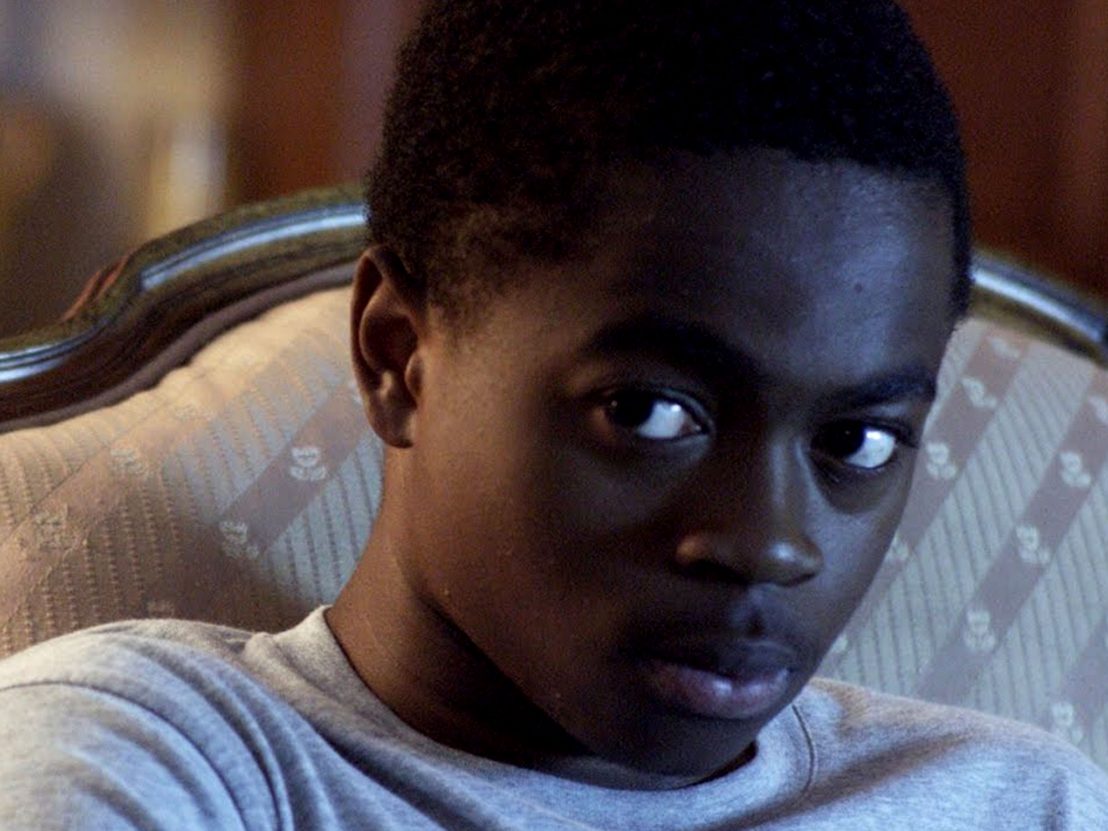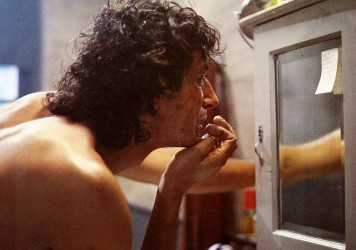
At the beginning of Fright Night, only the audience and our boy-next-door hero know that his new neighbour is a vampire. In The Transfiguration, Tom Holland’s 1985 cult classic is a key reference point for Milo (Eric Ruffin), who imagines his own vampirism as private rage and hunger, not a projection of outsider anxieties.
Just as Philip Ridley’s The Reflecting Skin and Ana Lily Amirpour’s A Girl Walks Home Alone at Night did before it, Michael O’Shea’s bizarro coming-of-age film feeds on its protagonist’s oppressive environment. The director presents his philosophy as part of this collective asserting of the vampire into the sociopolitical history of horror. As much as Blacula and Vampire in Brooklyn assumed the opposite, O’Shea picks up where the black manifesto of Ganja & Hess left off.
Breaking with centuries of folklore, Milo doesn’t believe that a person needs to be bitten to become a vampire. It’s something that grows inside, from sucking a wounded finger to stalking human prey, tapping into the Cronenbergian notion that the body will mutate without warning or consent. Milo describes his own life through negative space, how his mounting discontent and alienation led to his ‘transformation’. We imagine this tragic change from what’s left unsaid. Gore is kept to a minimum, but we still sense the visceral terror of a child driven to drink blood as escapism.
Without a miracle, it’s either this or become mixed up in the gangland activity of his housing project. At least, in vampirism’s solitary aesthetic, Milo has cut himself off from the other option, even if that has given rise to his own criminality. If he can steal from any of his kills, he will; an ulterior motive glossed over in his personal mythology.
Invigorated and reassured by the idea that this thirst makes him a vampire, Milo stalks his victims knowing that each kill will bring a small relief from anxiety and deprivation. It’s never explicitly stated which came first to him – the vampire fantasy or the urge to feed. But he’s certainly been fascinated in the subject for years, amassing a VHS collection in tribute and for his ‘studies’. Through all of this, he feels no despair, only a blindsided dedication to his fantasy. Even his lack of emotion could be part of his becoming.
The ritual of Milo’s research and re-enactment cycle mirrors the emotional disaffect of The Reflecting Skin’s Seth Dove (an explosive Jeremy Cooper in his first role). He sees his father set himself alight and watches him burn to death, but doesn’t cry. Their emotional separation could be a symptom of depression or, as Ridley himself noted, the early signs of psychopathy.
Seth’s mother may be overzealous with her punishments, and his father distant even before his suicide, but he can’t find fault with his family life. He wants to see the insensitivity of his little world as something other.
Before the father comes under suspicion for the death of a child in his community, he tells his son a story about vampires. They can’t go out in the sun, sleep in coffins in the day and suck the blood of humans. If they don’t have blood, they get old and die. Dolphin Blue (Lindsay Duncan), pale with a soul-piercing stare, only goes outside in a black headscarf and shades. Seth’s imagination does the rest. The investigation he undertakes to prove her guilt gives him purpose, a distraction from the vague, hopeless tension exuded by his elders.
The fairy tale nature of this tension, the temptation of a forbidden otherworld, indicates the danger of Milo’s violent escapism, Seth’s overprotected existence, and the righteous crusade of the Girl (Sheila Vand) in A Girl Walks Home Alone at Night. The latter two even feign romance in dramatic ignorance of darker forces at play. Ridley’s wheat fields are spray-painted gold for the hyper-real brightness of a half-remembered childhood. The Girl is lit in soft monochrome like the taboo-breaking Irene Zazians, though she drinks the blood of men who perpetuate the misogyny of an amorphous Iran. Her vampirism is never confirmed either. Only a drug-dealing pimp perceives a set of fangs, perhaps in fear of being preyed upon as castigation for his jungle cat facade.
The Reflecting Skin, on the other hand, works on a child’s resolute belief and literal thinking to build its fantasy before shattering it with grown-up truths. That Seth would rather believe in an imagined vampire than face the full extent of the death around him speaks to Ridley’s nostalgic intent. Amirpour, meanwhile, relies on familiar archetypes: the princess, the enchantress, the roguish Jack of all trades. Entrapment by oppression gives these characters a need to affect something, frustration and recklessness inviting punishment.
But in The Transfiguration O’Shea refuses to pretend to any ‘going into the dark forest’ allegory for discovering evil. His film is grey and hard, intimate and low-lit. Milo was born in these woods. Unlike the Girl, the film knows that Milo is no hero or martyr, regardless of his victims’ crimes. He consumes cruelty and becomes it. Even the new girl in town, his white and virginal angel, can’t save him.
As The Transfiguration ends, Milo is no closer to realising that his blood does not originate from within. He descends into rage against others and finally himself. Seth reiterates his own society’s ignorance through his ever more malignant imaginings, letting Dolphin get into a car with men he has come to recognise as the true killers. The Girl’s attempt at a romantic ending is hopeless. She has refused to shed the chador that denotes her vampirism, and the road ahead leads only into darkness. For Milo, the darkness is equally eternal. In his vampire’s hunger, this may be a blessing.
Published 19 Apr 2017

After 30 years David Cronenberg’s tour de force of disgust is as powerful and penetrating as ever.

By Jack Godwin
Watch the trailer for Michael O’Shea’s intriguing indie horror.

Doomed projects like David Cronenberg’s Frankenstein are discussed in Untold Horror.